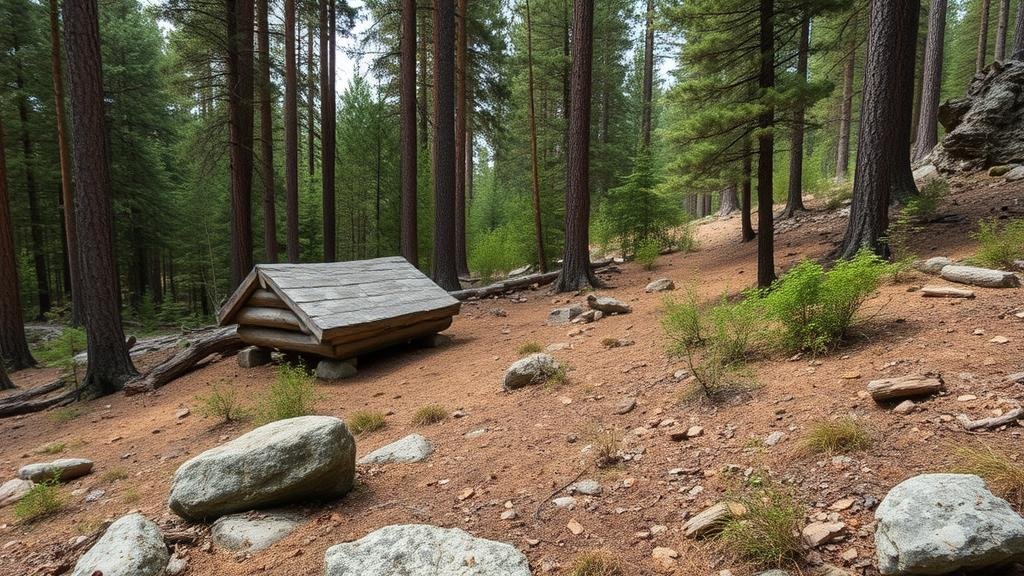Exploring Ancient Forest Edge Settlements for Prehistoric Artifact Finds
Exploring Ancient Forest Edge Settlements for Prehistoric Artifact Finds
The study of ancient forest edge settlements presents a critical opportunity to uncover the lifecycle and sociocultural dynamics of prehistoric communities. Forest edges–transition zones between forested and open environments–are often rich in biodiversity and resources, making them attractive sites for human habitation during prehistoric times. This article delves into methodologies for investigating these settlements, the implications of prehistoric artifact finds, and the significant findings from notable sites around the world.
Historical Context
Ancient forest edge settlements have been identified in various locations, including Europe, North America, and parts of Asia. e habitats provided access to diverse resources such as game, plants, and materials for tool-making. Archaeological evidence suggests that these areas were frequently occupied from the Paleolithic era through to the Neolithic period. For example, studies around the Mesolithic settlements in the Thames valley in England have uncovered significant amounts of lithic and ceramic artifacts that shed light on subsistence strategies and trade networks.1
Methodologies for Artifact Recovery
Recovering artifacts from ancient forest edge settlements typically involves systematic archaeological methods. e processes can be broken down into several key components:
- Site Surveying: Conducting extensive surveys using techniques such as remote sensing and geophysical methods to identify potential archaeological sites.
- Excavation: Employing stratigraphic excavation techniques to retrieve artifacts, taking care to record their context accurately, which is crucial for later analysis.
- Artifact Analysis: Analyzing recovered materials using methods such as lithic analysis, residue analysis, and dating techniques (e.g., radiocarbon dating) to establish their age and usage.
An example of successful methodology is the excavation conducted at the site of Çatalhöyük in modern-day Turkey (circa 7500 BCE), where detailed stratigraphic excavations provided insights into the ecological and social dynamics of early agricultural societies.2
Significance of Artifact Finds
The artifacts uncovered at forest edge settlements often provide vital information regarding the lifestyle, diet, and technological advancements of prehistoric societies. Common finds include:
- Tools: Stone tools such as axes, knives, and scrapers indicate hunting and gathering practices as well as early agricultural activities.
- Pottery: Ceramics can reveal cooking practices, food storage methods, and trade between communities.
- Faunal and Floral Remains: Analysis of these remains informs researchers about the diet and environmental interactions of prehistoric peoples.
For example, the recovery of fish bones at several coastal archaeological sites in the Pacific Northwest has provided evidence that early groups engaged in complex fishing techniques well before the advent of agriculture, highlighting varied subsistence strategies.3
Challenges and Considerations
Researching ancient forest edge settlements is not without its challenges. Factors including environmental change, looting, and lack of funding can hinder archaeological efforts. Also, distinguishing between natural and human-induced changes to the landscape adds complexity to data interpretation. A thorough interdisciplinary approach, integrating ecology, anthropology, and geology, is quintessential to overcoming these challenges.
Case Studies
Several key case studies illustrate the successful recovery and analysis of artifacts from ancient forest edge settlements:
- The Koster Site (Illinois, USA): This Archaic period settlement (circa 8000-2000 BCE) featured an abundance of stone tools and plant remains, contributing to our understanding of early subsistence patterns in the Midwest.
- Star Carr (Yorkshire, England): A Mesolithic site known for its preserved wooden structures and tools, providing critical insights into the seasonal occupation of areas near forest edges.
These sites underscore the importance of careful excavation and analysis in revealing the lifestyles of prehistoric human populations and their adaptation strategies in edge environments.
Conclusion and Actionable Takeaways
The exploration of ancient forest edge settlements is a compelling facet of archaeological research that unearths critical knowledge about prehistoric human behavior. By employing rigorous methodologies, researchers can effectively recover and analyze artifacts that illuminate our understanding of historical communities. Future research should focus on:
- Enhancing collaboration between disciplines to address challenges in artifact recovery and analysis.
- Investing in conservation efforts to protect at-risk archaeological sites.
- Utilizing advanced technologies such as GIS (Geographic Information Systems) for site analysis and predictive modeling.
Through continued exploration and intervention, we can hope to significantly enrich our understanding of human history and our interaction with forest edge ecosystems.
By acknowledging and addressing the potential challenges, as well as celebrating the successes in archaeological research, we pave the way for future discoveries that further our comprehension of humanitys past.
References:



